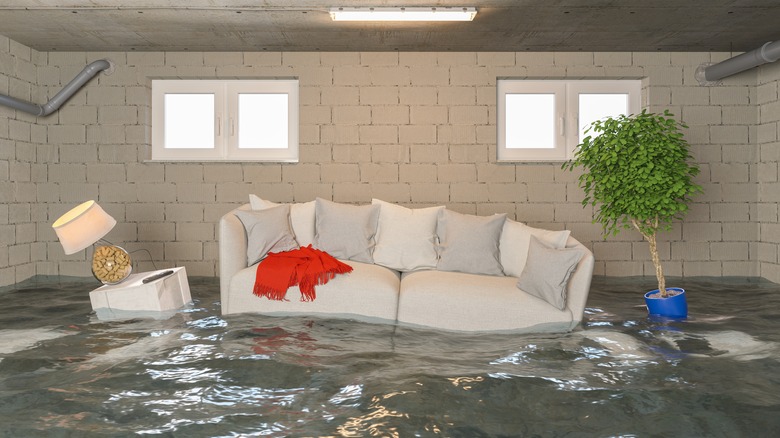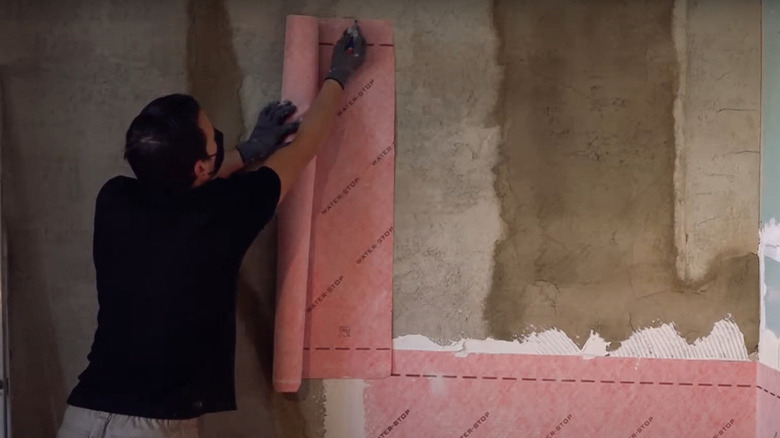This TikTok Creator's DIY Basement Waterproofing Raises Important Questions
When TikTok home renovation creator @winnidesigns posted a video showing him and his wife moisture-proofing a basement wall from the inside using GURU Water-Stop waterproofing membrane, commenters did what commenters everywhere do — attacked indiscriminately and, at least in part, incorrectly. Many commenters certainly had a point: generally speaking, basement waterproofing is best done from the outside of the building's foundation, and interior (negative-side) water management solutions are a good deal more elaborate than what @winnidesigns was doing. Fair enough. But most commenters missed the fact that he had already done the exterior drainage and waterproofing work — probably realizing that you can expect foundation repairs to cost upwards of $10,000, he is taking good care of his. Of course, you can also expect properly waterproofing a basement to cost between $3,000 and $7,000.
Most complete interior drainage solutions include a membrane as part of a system designed to channel water away from the interior. The most common and effective of these is probably a weeping tile drainage system, which is effective enough to use on the interior of a basement wall to route water away from the foundation walls. But ideal basement waterproofing often involves keeping water away from the foundation to begin with, and that's exactly what @winnidesigns did.
The basics of basement waterproofing
Foundations can be waterproofed by the application of membranes and other materials on the exterior, or sometimes the interior of foundation walls. Interior waterproofing membranes (or negative-side membranes) are often applied in a liquid form. Polyguard's PRO 1000 can be used as an exterior or interior coating to prevent water from moving through your foundation. All of these solutions work best when water is kept away from the foundation by proper landscape and drainage. This typically involves excavation work and, for this and other reasons, is often left to the pros.
Proper drainage and grading varies from home to home, of course. In @winnidesigns' case, he dug to the bottom of the foundation and installed closed-cell foam insulation — insulation is absolutely essential for a basement – and a waterproof membrane. He then installed a French drain around the home, into which perforated pipe was laid in a bed of gravel. This pipe, and another handling gutter water, are routed to a sump for periodically pumping water away from the foundation. So when he installed the GURU membrane inside the basement, it would have very little moisture to contend with and might, in fact, protect the foundation as much from interior water sources as from exterior, since the wall was being waterproofed behind tile in what looks like a bathroom.
Is this a good use of the product itself?
In the right circumstances, the GURU membrane alone might be sufficient to protect a foundation. The product is a geotextile designed for use underneath tile in wet applications, and it's certainly waterproof enough. It's applied with thin-set mortar. A video from the manufacturer shows the membrane being installed directly onto what appears to be untapped drywall, and in a manufacturer diagram, appears to show the product applied directly to OSB (oriented strand board) with thin-set. GURU also shows outdoor applications including the deck of a commercial loading area, concrete stairs, flat commercial roofs, and as a swimming pool liner.
If this seems like a broad set of uses, it is. GURU says that using their product for shower liners and crack isolation is more a matter of regulation than of the membrane's limitations, stating, "We do exterior applications with it in other countries where the installation requirements allow us." Where local codes allow, it could probably be used for exterior foundation waterproofing with the right adhesives, flashing, and so on.

